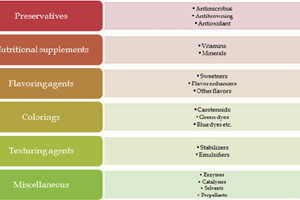Major players in the market are CP Kelco, ADM, Ingredion Incorporated, Ashland Global Specialty Chemicals Inc., Tate & Lyle PLC, Cargill Inc., Jungbunzlauer Suisse AG, TIC Gums, Medline Industries LP, Archer Daniels Midland Company, Deosen Biochemical (Ordos) Ltd.
The global food thickeners market grew from $11.44 billion in 2022 to $12.36 billion in 2023 at a compound annual growth rate (CAGR) of 8.0%. The Russia-Ukraine war disrupted the chances of global economic recovery from the COVID-19 pandemic, at least in the short term. The war between these two countries has led to economic sanctions on multiple countries, a surge in commodity prices, and supply chain disruptions, causing inflation across goods and services, and affecting many markets across the globe. The food thickeners market is expected to grow to $16.44 billion in 2027 at a CAGR of 7.4%.
The food thickeners market consists of sales of starches, vegetable gums, pectin, eggs, collagen, gelatin, blood albumin. Values in this market are ‘factory gate’ values, that is the value of goods sold by the manufacturers or creators of the goods, whether to other entities (including downstream manufacturers, wholesalers, distributors and retailers) or directly to end customers.
The value of goods in this market includes related services sold by the creators of the goods.
Food thickeners are used to maintain the texture of food and help to create texture. A food thickener refers to a substance, agent, or ingredient that is added to food to change its viscosity. With the help of thickeners, the food becomes stiffer and denser.
Europe was the largest region in the food thickeners market in 2022.Asia-Pacific is expected to be the fastest-growing region in the forecast period.
The regions covered in the food thickeners market report are Asia-Pacific, Western Europe, Eastern Europe, North America, South America, Middle East, and Africa.
The main types of food thickeners are starch, protein, and hydrocolloids. Starch refers to a polysaccharide consisting of many glucose monomers joined together by glycosidic bonds.
The sources include plants, microbials, and animals. These are used in bakery, confectionery, sauces, dressings, marinades, and gravies, beverages, dairy and frozen desserts, convenience, and processed food.
Extensive use in food and beverages is expected to propel the growth of the food thickeners market going forward. The food and beverage industry refers to the companies that engage in food processing, packaging, and distribution of packaged and freshly prepared dishes, as well as alcoholic and non-alcoholic beverages.
Food thickeners help the food and beverages industry by raising the viscosity of a diet or beverage and maintaining its consistency. For instance, according to the Agricultural and Processed Food Products Export Development Authority (APEDA), an Indian Apex-export trade promotion active government body, processed food product exports increased from $11,671 million in 2020-21 to $ 13,261 million in 2021-22.
Therefore, extensive use in food and beverages is driving the growth of the food thickener market.
Product innovations are a key trend gaining popularity in the food thickeners market. Major companies operating in the food thickeners market are innovating new products to sustain their position in the food thickeners market.
Source: ReportLinker












